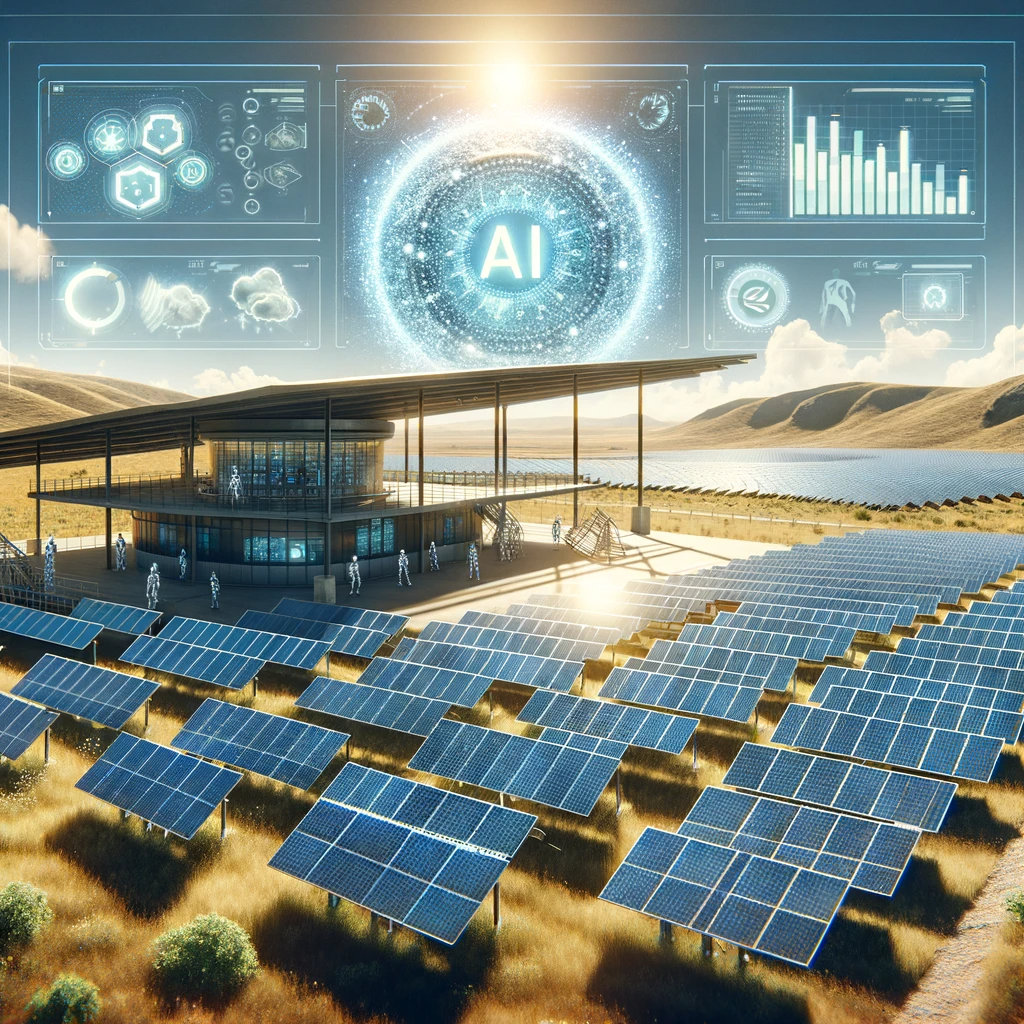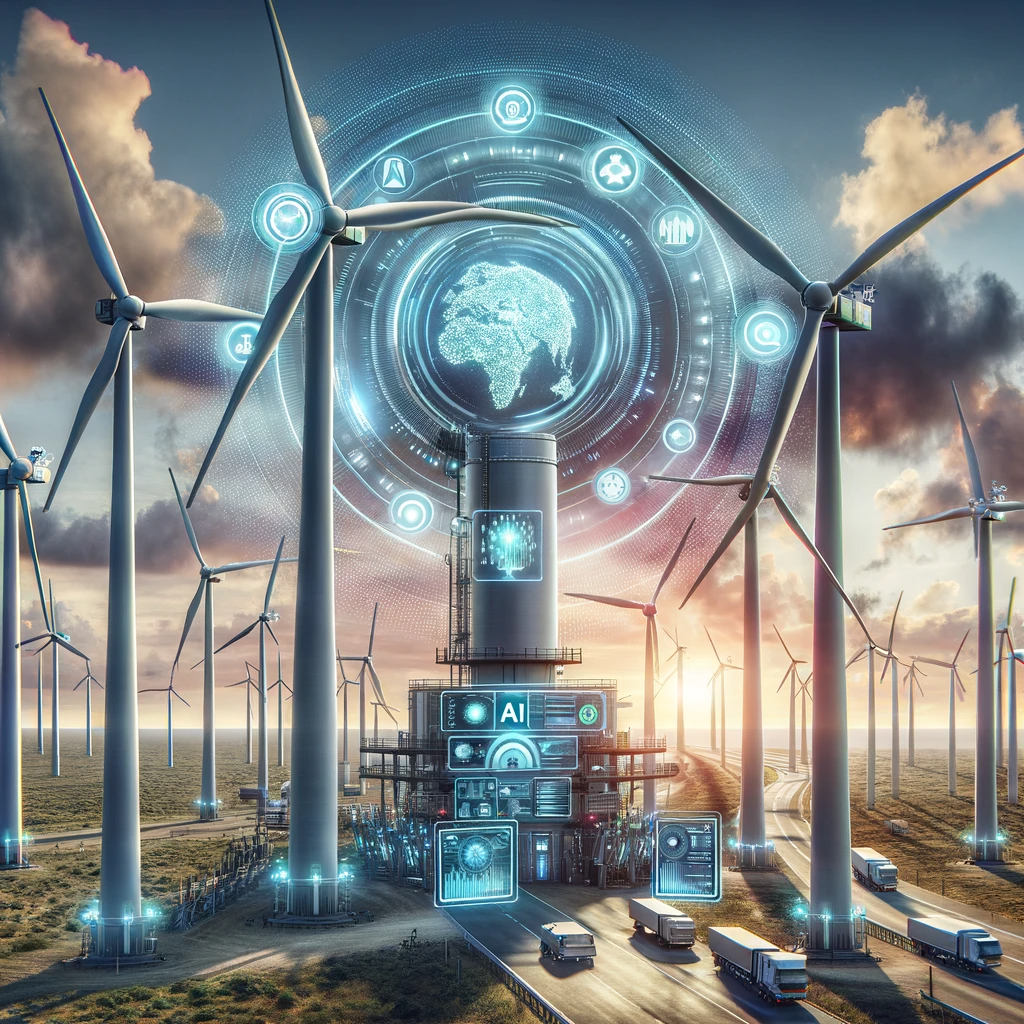The world stands at a pivotal moment in its battle against climate change, where the pursuit of clean and sustainable energy sources has never been more critical. Renewable energy, with its promise of reducing greenhouse gas emissions and lessening our dependence on fossil fuels, has emerged as a beacon of hope in this global endeavor. Solar panels glisten atop rooftops, and graceful wind turbines pierce the horizon, but harnessing the full potential of these renewable sources poses a unique set of challenges. Among the myriad tools in our arsenal, one technology has taken center stage in the quest for efficiency and optimization: Artificial Intelligence (AI).
As the demand for renewable energy continues to surge, AI is proving to be more than just a supporting player; it is becoming the driving force behind renewable energy’s transformation. This article explores the profound impact of AI on the renewable energy sector, focusing on its integration into the optimization of solar and wind energy. We will delve into how AI is not merely facilitating incremental improvements but revolutionizing the way we generate, distribute, and store renewable energy. From predictive maintenance to grid management, the fusion of AI and renewable energy is redefining the energy landscape and offering a glimpse into a sustainable future. In the following sections, we will uncover the remarkable journey of AI in renewable energy and its potential to pave the way for a greener and more efficient world.
The Current State of Renewable Energy:
The renewable energy sector has made significant strides in recent years, with solar and wind power leading the charge. Solar panels are becoming increasingly commonplace on residential and commercial rooftops, while wind farms are springing up across landscapes worldwide. These sources of clean energy hold immense promise, but they are not without their challenges.

Intermittency, one of the primary challenges of renewable energy, occurs when the sun doesn’t shine, or the wind doesn’t blow. This unpredictability poses difficulties in matching energy supply with demand, especially in the absence of efficient storage solutions. Furthermore, integrating renewable sources into existing energy grids can strain infrastructure, jeopardizing grid stability.
The Rise of AI in Renewable Energy:
Enter Artificial Intelligence (AI), the technology that thrives on complexity and uncertainty. AI has transcended its role as a futuristic concept and is now a vital tool in optimizing renewable energy. With its ability to process vast amounts of data, learn from patterns, and make real-time decisions, AI is uniquely suited to tackle the challenges of renewable energy.
AI’s entrance into the renewable energy sector is characterized by innovation and adaptability. It’s not a one-size-fits-all approach but rather a suite of solutions tailored to each aspect of renewable energy production and distribution.
Optimizing Solar Energy with AI:
In the realm of solar energy, AI has brought about a revolution in efficiency. AI algorithms can analyze weather forecasts, historical data, and the performance of individual solar panels to predict when maintenance is required. This predictive maintenance ensures that solar panels operate at peak efficiency, extending their lifespan and reducing downtime.
Companies and projects around the world are harnessing AI to maximize the potential of solar energy. For example, the Desertec Industrial Initiative in North Africa utilizes AI to manage massive solar farms efficiently. These developments signal a new era in which solar energy is not only sustainable but also economically viable.
Enhancing Wind Energy with AI:
Wind energy is also experiencing a windfall of benefits from AI integration. AI-driven predictive analytics are improving wind turbine performance. Algorithms can predict wind patterns and adjust turbine angles in real-time to capture the maximum amount of energy. This level of precision has led to substantial increases in energy output from wind farms.
Real-world examples, such as the Horns Rev 2 offshore wind farm in Denmark, showcase how AI enhances wind energy production. Through AI-powered optimization, this wind farm achieved a remarkable increase in energy generation, further underlining AI’s role in the renewable energy revolution.
Grid Distribution and Energy Storage:
AI is not confined to the generation of renewable energy; it also plays a pivotal role in its distribution. AI-driven grid management systems can balance the supply and demand of electricity more effectively, incorporating renewable sources seamlessly into the grid. Additionally, AI helps manage energy storage solutions, such as batteries, ensuring surplus energy is stored efficiently and released when needed.
The importance of grid stability cannot be overstated, and AI is becoming the linchpin in achieving a reliable and robust energy grid that relies predominantly on renewable sources.
Environmental and Economic Impact:
The integration of AI in renewable energy isn’t just about improving efficiency; it has far-reaching environmental and economic implications. By optimizing renewable energy sources, AI reduces the reliance on fossil fuels, resulting in reduced carbon emissions and a cleaner environment. Furthermore, it can lead to significant cost savings, making renewable energy more accessible and cost-effective for consumers and industries alike.
As we delve deeper into the environmental and economic benefits of AI-driven renewable energy, it becomes clear that this marriage of technology and sustainability holds immense promise for our planet and our economy.

Challenges and Ethical Considerations:
While the prospects of AI in renewable energy are promising, it is not without its challenges and ethical considerations. Privacy concerns, data security, algorithm bias, and regulatory hurdles must be addressed to ensure responsible AI implementation in the energy sector.
Navigating these challenges will be crucial to ensuring that AI benefits all and does not exacerbate existing inequalities or harm the environment inadvertently.
Future Prospects and Conclusion:
The journey of AI in renewable energy optimization is still in its early stages, but the path ahead is clear: AI will play an increasingly central role in our transition to sustainable energy sources. As technology advances and AI continues to learn and adapt, the possibilities for renewable energy optimization are boundless.
In conclusion, AI is undeniably paving the way for renewable energy optimization. From improving the efficiency of solar and wind energy to enhancing grid management and storage solutions, AI is reshaping the renewable energy landscape. As we stand at the intersection of technology and sustainability, the future holds the promise of a greener, more efficient world powered by the collaborative efforts of AI and renewable energy.
